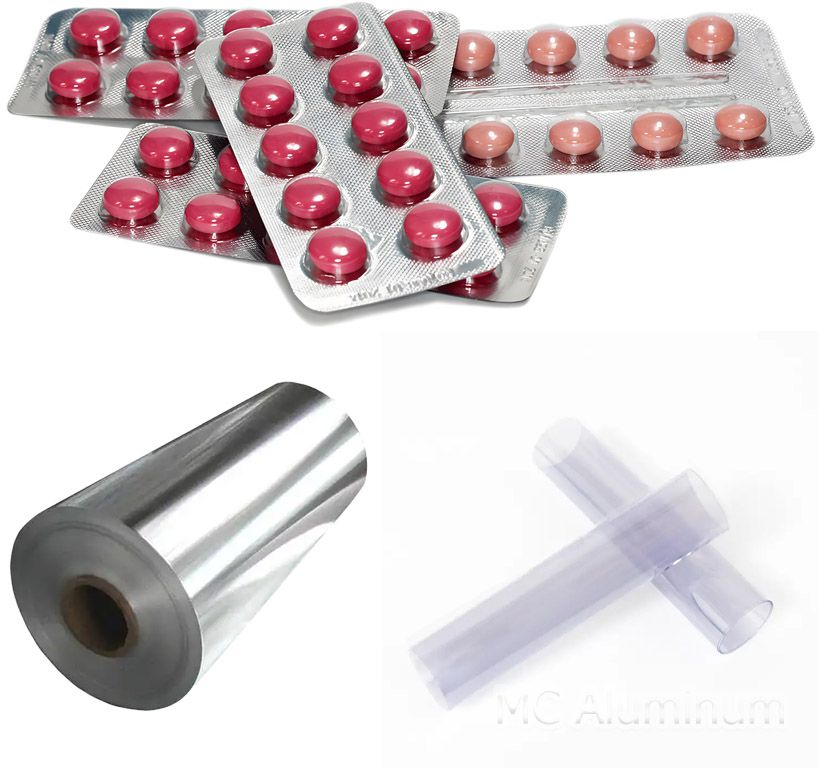Aluminum-plastic blister packaging, also known as blister packaging, is a form of solid drug packaging. After the transparent plastic hard sheet (such as PVC rigid sheet) is blister-formed, solid drugs such as tablets, pills, and capsules are filled in the groove, and then heated and bonded with aluminum foil coated with adhesive to form an independent sealed package.
At present, the blisters of aluminum-plastic blister packaging for tablet drugs are usually evenly distributed on the plastic substrate, and the number of blisters has no corresponding relationship with the dosage of the drug. This packaging method can effectively protect the drug from environmental factors such as moisture, oxygen, and light, extend the shelf life of the drug, and facilitate patients to take and carry it.
Characteristics of aluminum-plastic blister packaging:
1. Bright appearance and good texture: The aluminum-plastic blister packaging has a bright appearance and excellent texture, which can enhance the beauty and visual effect of the drug and increase its attractiveness.
2. Good sealing performance: Aluminum-plastic composite materials have good sealing performance, which can effectively isolate oxygen, moisture and other factors, prevent drugs from getting damp and oxidized, and maintain the quality and stability of drugs.
3. Easy to carry: The aluminum-plastic blister packaging plate is compact in size, easy to carry and take, and patients can put the drugs in their pockets for easy access at any time.
4. Accurate dosage: Each blister usually contains only one tablet, which is convenient for patients to take according to the dosage accurately.
5. Safe medication: The aluminum-plastic blister packaging only needs to open the last package when taking it, which enhances the safety of medication and reduces the risk of bacterial contamination of drugs.

Structure of aluminum-plastic blister packaging:
1. Aluminum foil layer: It plays the role of sealing, blocking moisture, oxygen, light and preventing external pollution. Mainly using 8011 aluminum foil, the common aluminum foil layer thickness is generally between 20 and 25 microns, with strong barrier properties.
2. PVC/PE plastic sheet layer: It is usually used to make the container shape of tablets. The transparency of the plastic sheet is high, which is convenient for checking the status of the drug. Common plastic sheet materials include polyvinyl chloride (PVC) and polyethylene (PE).
3. Blister: According to the size and shape of the tablet, the plastic sheet will be hot-pressed into a corresponding groove shape to ensure that each tablet of medicine is firmly placed in the groove to prevent the medicine from being squeezed or damaged.
4: Sealing layer: The sealing layer is usually composed of another layer of aluminum foil or plastic film, which is used to seal the blister to prevent external air, moisture, etc. from entering the package. The sealing layer is combined with the plastic substrate layer through heat sealing technology to ensure the sealing of the package.
